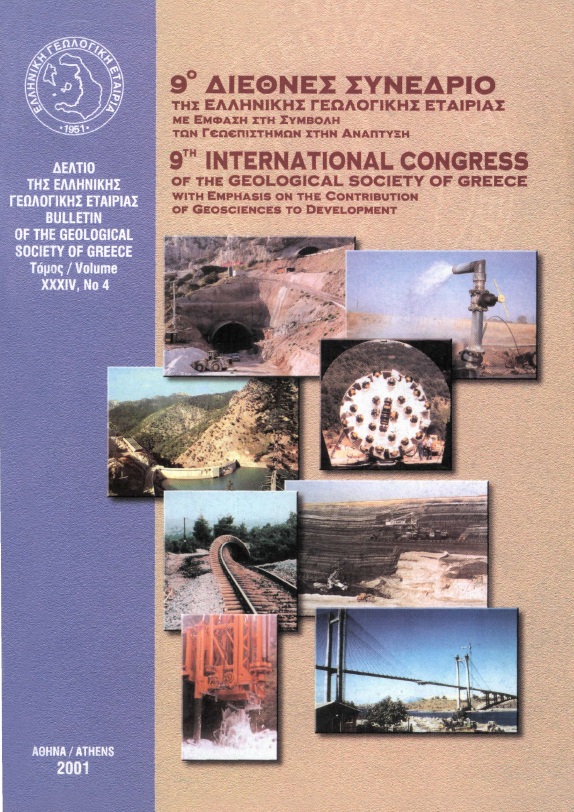The Konitsa, Epirus-NW Greece, July 26 (Ms=5.4) and August 5, 1996, (Ms=5.7) earthquakes sequence
Περίληψη
On August 5, 1996, at 22:46 GMT (August 6, 01:46 local time), a strong shallow earthquake of Ms=5.7 occurred at the area of Konitsa, Epirus-northwestern Greece. The earthquake caused significant damage in the city of Konitsa as well as the neighbouring villages. In the same area on July 26, at 18:55 GMT (21:55 local time), another strong earthquake of Ms=5.4 had occurred, mainly causing damage at the lower part of Konitsa. In this study, data from seismological stations located in the broader area of NE Greece and neighbouring countries were used in order to study the spatial and temporal characteristics of this earthquake sequence. Focal mechanisms of the stronger shocks were also plotted. All the observations are combined, in order to obtain a better understanding of the regional tectonics and its seismic activity.
Λεπτομέρειες άρθρου
- Πώς να δημιουργήσετε Αναφορές
-
PAPANASTASSIOU, D. (2001). The Konitsa, Epirus-NW Greece, July 26 (Ms=5.4) and August 5, 1996, (Ms=5.7) earthquakes sequence. Δελτίο της Ελληνικής Γεωλογικής Εταιρείας, 34(4), 1555–1562. https://doi.org/10.12681/bgsg.17262
- Ενότητα
- Σεισμολογία

Αυτή η εργασία είναι αδειοδοτημένη υπό το CC Αναφορά Δημιουργού – Μη Εμπορική Χρήση 4.0.
Οι συγγραφείς θα πρέπει να είναι σύμφωνοι με τα παρακάτω: Οι συγγραφείς των άρθρων που δημοσιεύονται στο περιοδικό διατηρούν τα δικαιώματα πνευματικής ιδιοκτησίας επί των άρθρων τους, δίνοντας στο περιοδικό το δικαίωμα της πρώτης δημοσίευσης. Άρθρα που δημοσιεύονται στο περιοδικό διατίθενται με άδεια Creative Commons 4.0 Non Commercial και σύμφωνα με την οποία μπορούν να χρησιμοποιούνται ελεύθερα, με αναφορά στο/στη συγγραφέα και στην πρώτη δημοσίευση για μη κερδοσκοπικούς σκοπούς. Οι συγγραφείς μπορούν να: Μοιραστούν — αντιγράψουν και αναδιανέμουν το υλικό με κάθε μέσο και τρόπο, Προσαρμόσουν — αναμείξουν, τροποποιήσουν και δημιουργήσουν πάνω στο υλικό.





